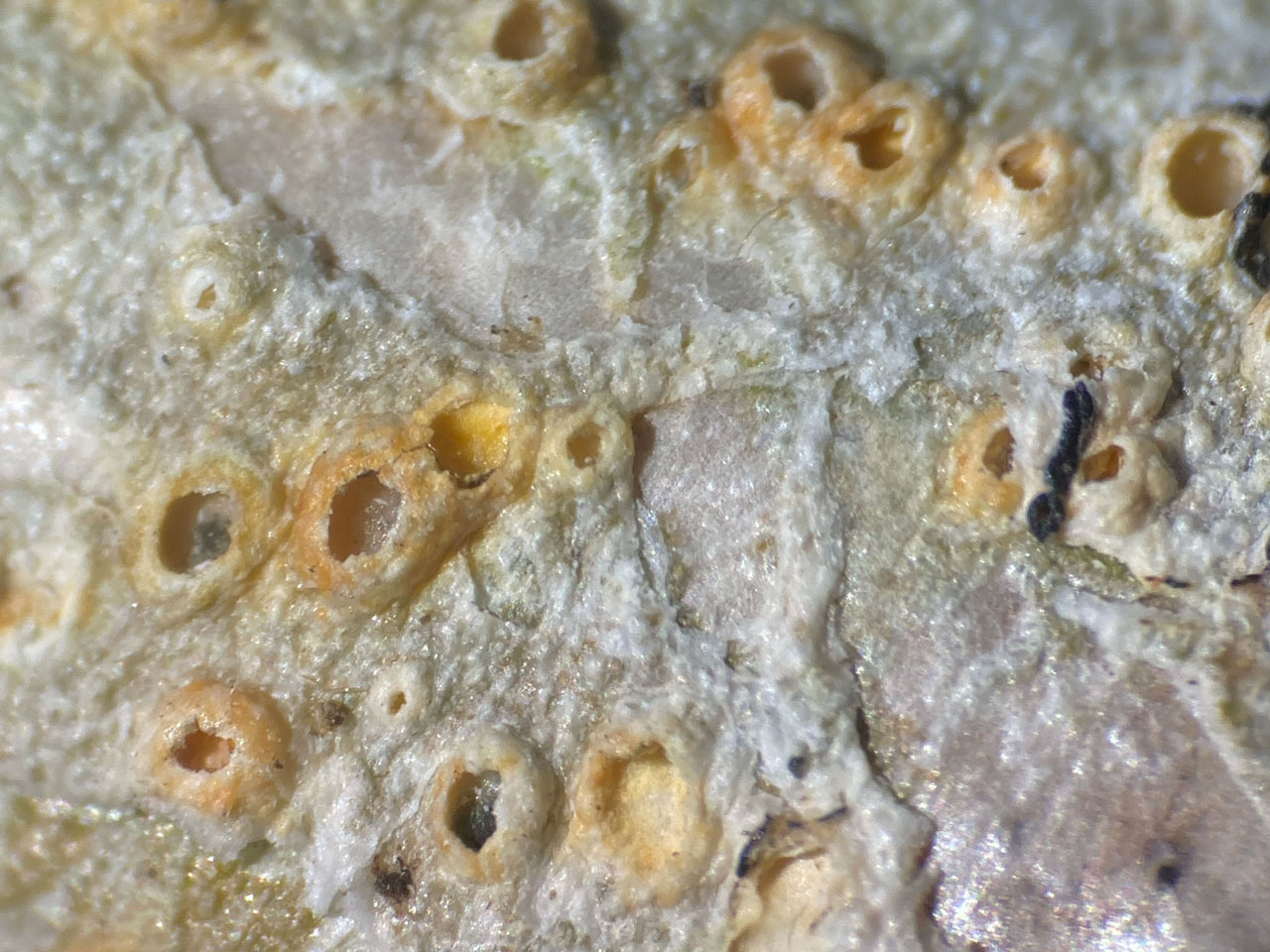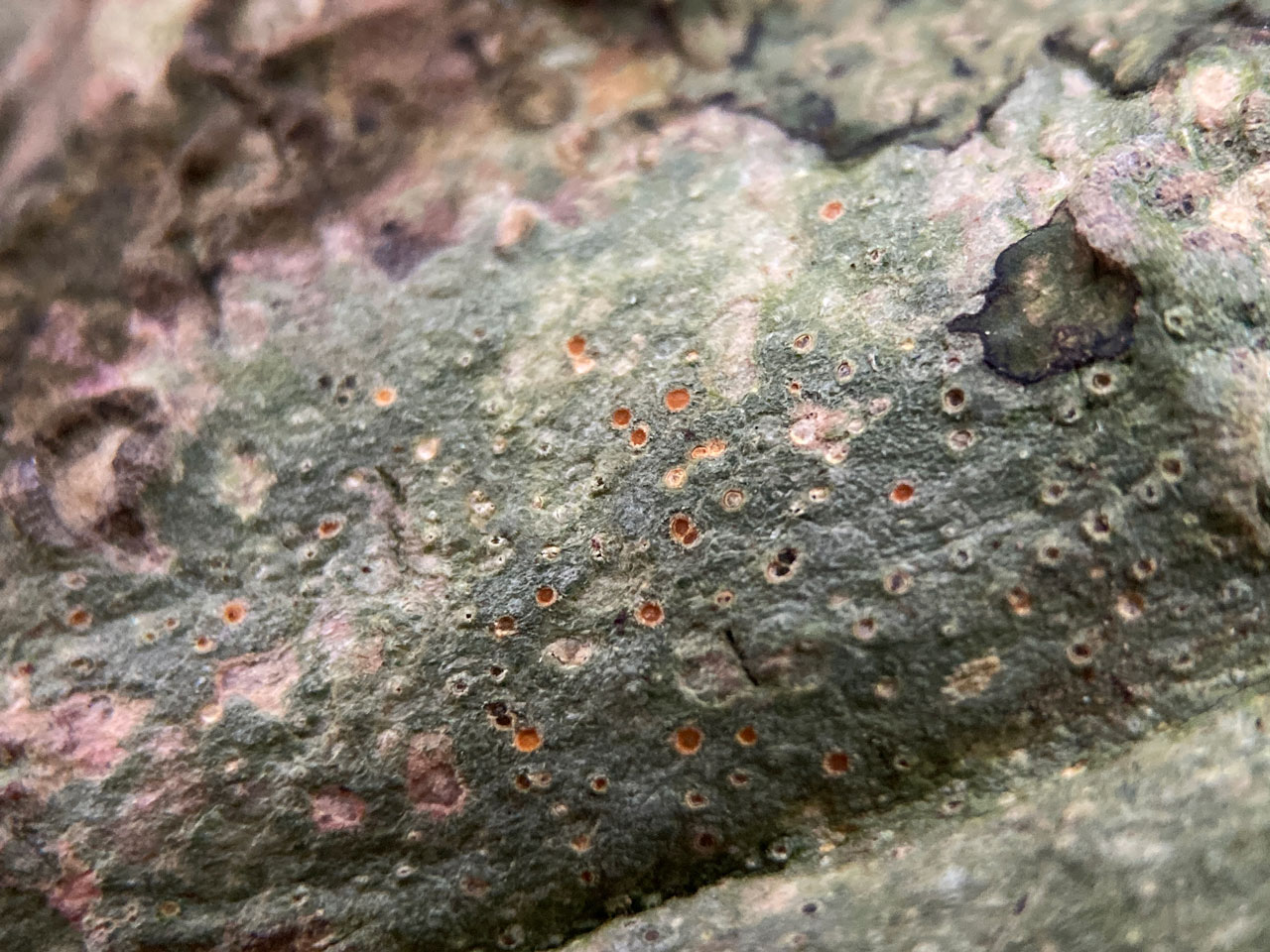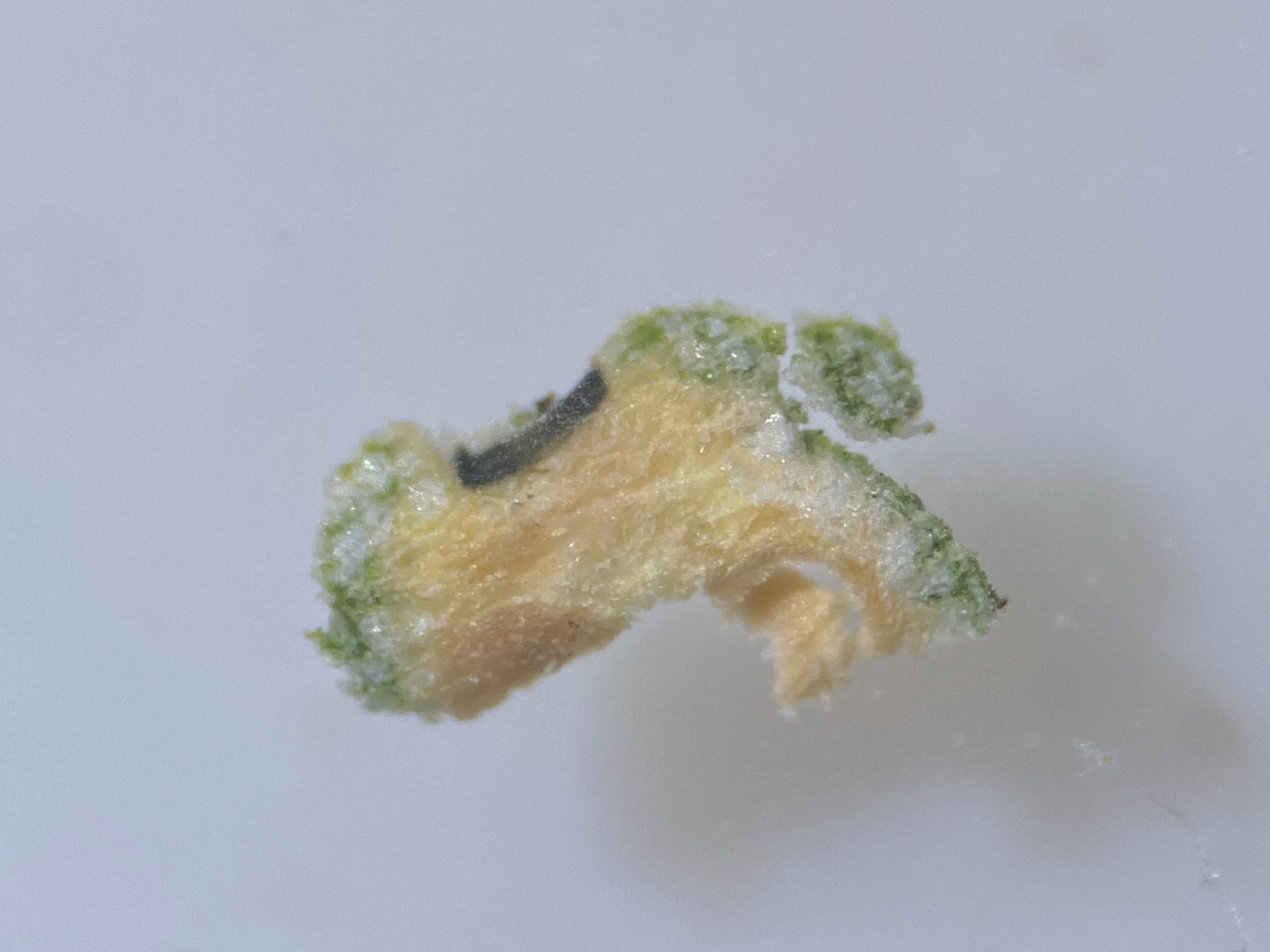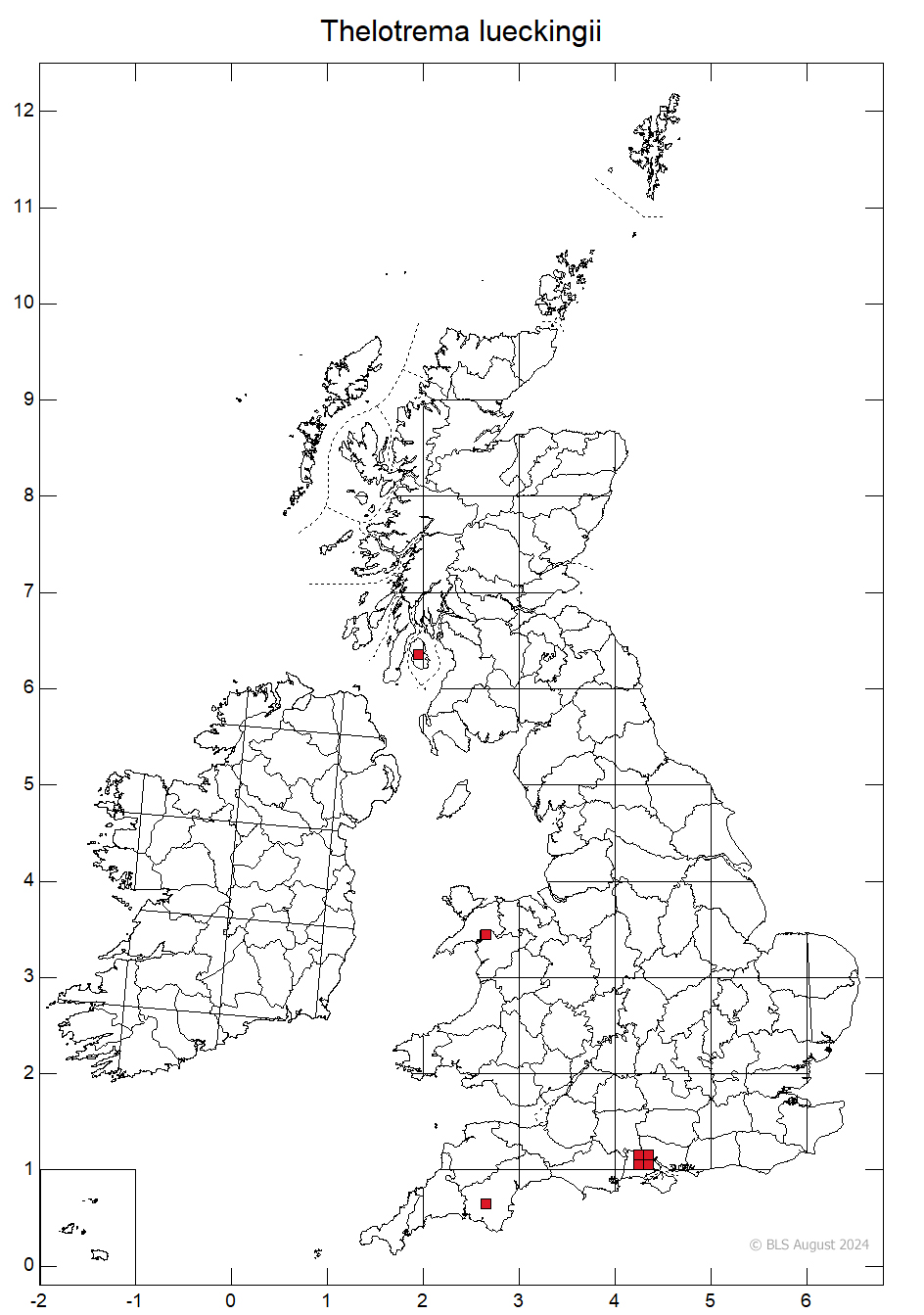Thelotrema lueckingii
Thelotrema lepadinum thalli with yellow pigments in the medulla, especially in the warts, have long been known in Britain, but have only recently been separated as Thelotrema lueckingii. This probably widespread in the west, but maybe confined to quite humid locations. When exposed, the citrine yellow medulla tends to darken to a more orange colour. In many examples the colouring is only visible on cross section or when the fertile wart is knocked off, so this taxon may be much more frequent than can easily seen in the field.
Thallus thickish, yellowish white to greyish green, uneven to verrucose. Cortex K+ quickly brownish red. Medulla white to yellowish, with numerous large crystals, K+ brownish red (but slower reacting than the cortex). Apothecia similar to those of Thelotrema lepadinum: numerous, immersed in thalline warts. Thalline warts to 2 mm in diam., broadly adnate or basally slightly constricted, rounded, apically incurved, ostiolar opening to 0.5 mm diam.; medulla yellowish, containing large crystals. True exciple externally yellow, K+ red, the margin split to lacerate; disc blackish, usually greyish pruinose; hypothecium colourless; hymenium: colourless, clear, 140– 170 μm tall; periphysoids to 30 μm long; epithecium minutely granular. Ascospores 2-4 (-6) per ascus, muriform, widely fusiform, with a thick outer wall, 55–110 × 15–28 μm, remaining colourless, with a gelatinous perispore.
Similar to Thelotrema lepadinum in almost all details but deviating by the partly citrine yellow medulla (especially in the warts); the pigment reacts K+ red and darkens to an more orange colour when exposed.
This species was recently described from Macaronesia but already (around 150 years ago), Leighton depicted specimens with the characteristic yellow medulla from Britain on his herbarium sheets. The description is based on that of Breuss (2013). The amount of yellow pigment is very variable and appears to be present in some degree in entire populations of what was called Thelotrema lepadinum. A phylogenetic study using sequencing would be useful to confirm the status of this taxon.
On bark of mature trees, potentially characteristic of smooth bark in more humid locations, and typically found with Thelotrema lepadinum. It appears to have a narrower niche than Thelotrema lepadinum.

In Scotland, N. Wales, Hampshire and Devon, likely to be widespread and appears to dominate in many populations.
Not evaluated, but unlikely to be threatened, but does appear more confined to large old woods futher to the west than Thelotrema lepadinum.
Aptroot, A., Weerakoon, G., Cannon, P., Coppins, B., Sanderson, N. & Simkin, J. (2023). Ostropales: Graphidaceae, including the genera Allographa, Clandestinotrema, Crutarndina, Diploschistes, Fissurina, Graphis, Leucodecton, Phaeographis, Schizotrema, Thelotrema and Topeliopsis. Revisions of British and Irish Lichens 36: 1-23.
Breuss, O. (2013). Byssoloma laurisilvae und Thelotrema lueckingii, zwei neue Flechtenarten aus Madeira. Österreichische Zeitschrift für Pilzkunde 22: 99–105.
Text by Neil A Sanderson based on Aptroot et al (2023)



